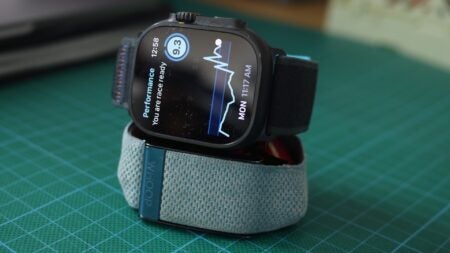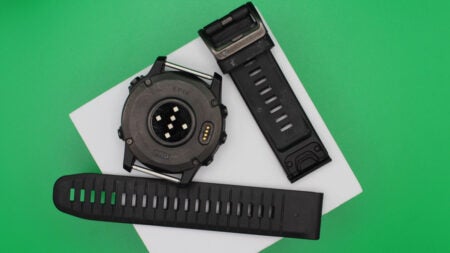Garmin’s biggest device drop of 2024 includes the Fenix 8 series and the all-new Enduro 3, leaving workout enthusiasts in the market for a new outdoor watch spoilt for choice.
With many similarities in their look and tracking capabilities, these two Garmin watch lines are still very much separated by the battery life estimations.
There are plenty more minor differences between the Enduro 3 and Fenix 8, though, and that’s where this guide comes in. Below, we’ve done our best to summarize the most notable differences in the design, battery life, features, price, and versions.
Note: We’re currently putting the Fenix 8 and Enduro 3 to the test ahead of a full review, and will update this comparison with first-hand, in-depth analysis over the coming weeks.
Read our full Garmin Fenix 8 review here.
Price and versions
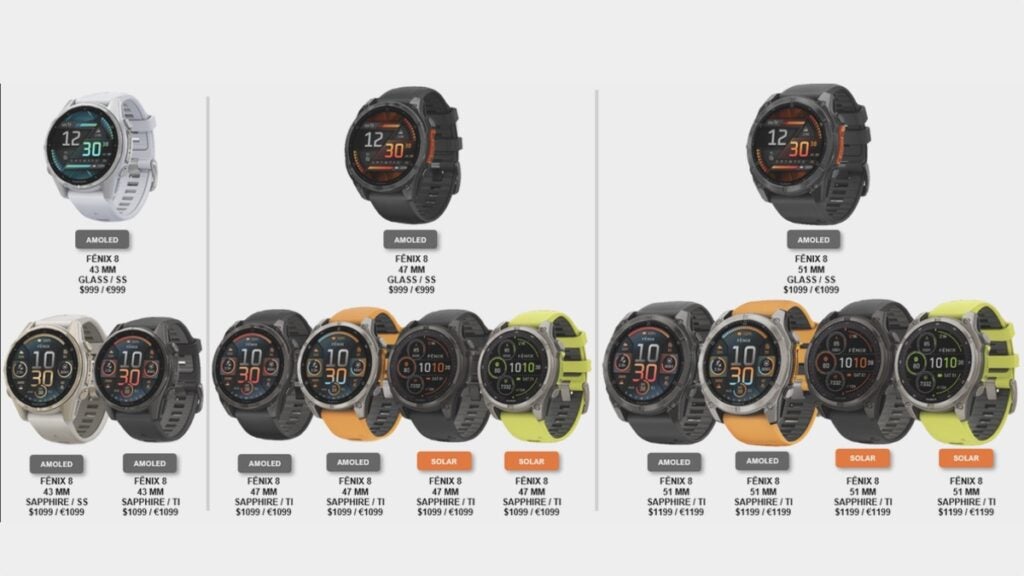
We’ve historically seen the Fenix line boast many different versions. Variations have always existed for case sizes, bezel material, display glass, and even GNSS type – and now, with the Fenix 8, fans can also choose between an AMOLED or solar charging model.
The AMOLED Fenix 8 models (available in 43mm – changed from 42mm in the previous generations – 47mm and 51mm) are essentially the rebranded upgrade of the Garmin Epix Pro (Gen 2). Meanwhile, Fenix OGs who prefer the classic memory-in-pixel (MIP) display have the choice between a 47mm and 51mm edition (there is no 43mm edition this time).
That’s five base models in total. Then, as we say, you have to begin considering which case color/band you like and whether you want to jump to a titanium bezel from stainless steel or select the more durable sapphire crystal glass.
For the $899 Enduro, it’s an entirely different story.
There’s only one 51mm version on offer – and all the options above come as standard, meaning there’s no opportunity (or need) to upgrade features like the display type, case size, bezel material, GNSS type, or covering glass.
Battery life
| Battery life | GPS battery life | |
| Garmin Enduro 3 (51mm) | Up to 90 days* | Up to 320 hours |
| Garmin Fenix 8 (47mm, Solar) | Up to 29 days | Up to 57 hours/**73 hours with solar |
| Garmin Fenix 8 (51mm, Solar) | Up to 48 days | Up to 89 hours/122 hours with solar** |
| Garmin Fenix 8 (43mm, AMOLED) | Up to 10 days | Up to 28 hours |
| Garmin Fenix 8 (47mm, AMOLED) | Up to 16 days | Up to 42 hours |
| Garmin Fenix 8 (51mm, AMOLED) | Up to 29 days | Up to 82 hours |
**Solar charging, assuming use in 50,000 lux conditions
Battery life is still the one major difference between these lines, with the Enduro 3 blowing the Fenix 8 (and the rest of the competition) out of the water – especially in GNSS staying power.
If the Enduro 3 is in ideal solar charging conditions, it can last around three months even with the always-on feature enabled on the memory-in-pixel display.
It means power users who are going to be away from their charger for weeks have an option that prioritizes battery above everything else.
Contrast that with the Fenix 8’s battery life, which, as shown in the table above, depends very much on the screen technology and each version’s size.
As expected, the shortest battery life – up to 10 days in smartwatch mode – is on the smallest and most power-hungry model (43mm, AMOLED). Remember, as well, that this estimation will come down considerably if you turn on the always-on display – perhaps in the region of four days.
As ever, the 47mm models represent an excellent middle-ground between industry-leading battery life and features, while the 51mm Fenix 8 models give you a huge extra chunk of battery life.
The model we’re most unsure about is the 51mm Fenix 8 Solar, given this is the same size and screen type to the Enduro 3 but only provides around half the battery life. But we’ll reserve our full thoughts on that for our post-test comparison.
Design, display & build

Sitting at the top-end of Garmin’s outdoor watch line, it’s important to recognize that the Enduro 3 and Fenix 8 have much more in common than they do different.
So, aside from the versions discussed above, what are the most crucial differences to consider?
The displays are chief among them. While the bright, colorful AMOLED displays are available in the Fenix 8 range, the Enduro 3 sticks to the more power-efficient transflective MIP panel. We’ve always much preferred Garmin’s AMOLED displays (even if they’re not quite as punchy or bright as equivalent screens from Apple and Samsung), though many will undoubtedly still favor the old-school, non-smartwatch look of MIP.
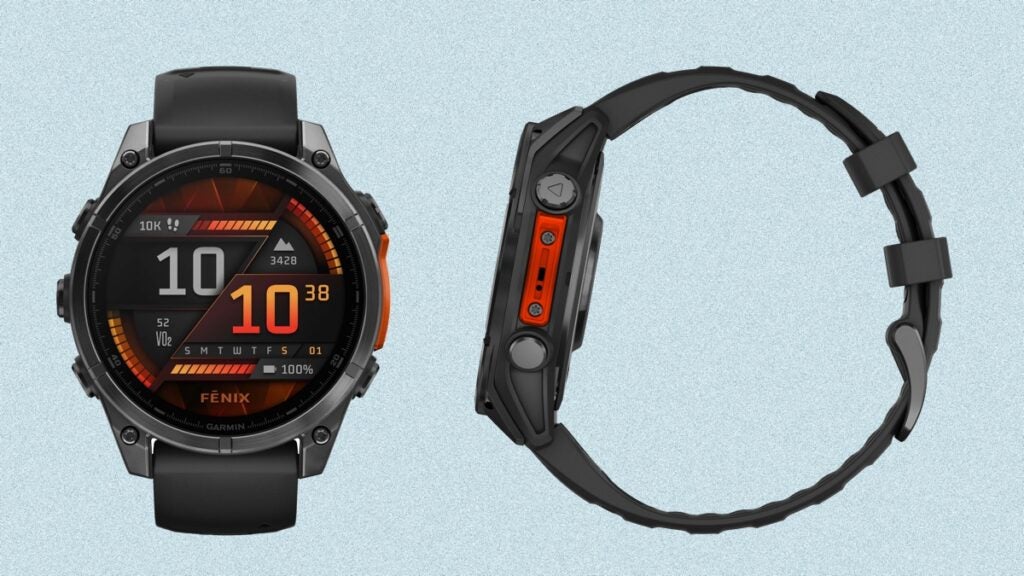
Then there are the durability specs to consider. This point very much depends on which model of the Fenix 8 you’re weighing up, as technically all of the Enduro 3’s specialties – the titanium case, sapphire lens, and nylon band – can all be upgraded to in the Fenix 8 range. Plus, with each Fenix 8 model, there’s now a new sensor guard (covering the case’s right edge) and leakproof buttons – neither of which are offered on the Enduro 3.
Both offer a built-in flashlight, though – a tool we’ve found incredibly clutch since it was first included as standard in last year’s Fenix 7 Pro/Epix Pro lineups.
Ultimately, we’re fans of both these designs, but the sheer level of options in the Fenix 8 range ensures it has a much broader appeal. The Enduro 3 has similar strengths, but with only one case size, a lesser (or identical) display, and all its unique qualities matched by the Fenix in some form, it’s easier to think of it as a remix of the 51mm Fenix 8 Solar from a design perspective.
Smart features and OS
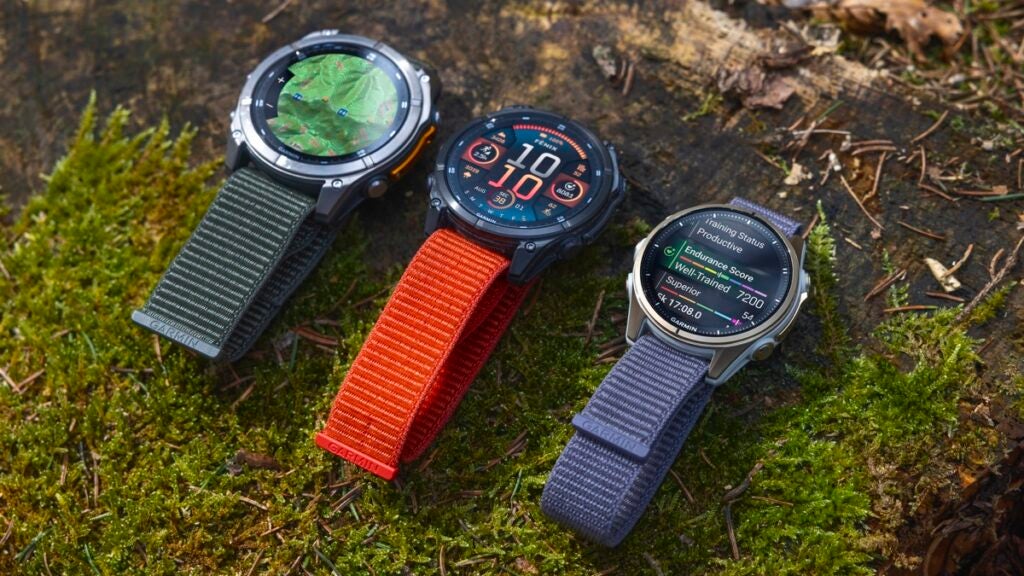
Neither of these are true smartwatches, but they do still boast the odd smart feature.
On both, users will receive the same notification mirroring (in which replying and handling them is very limited), access to the Garmin Connect IQ store for some watch faces and third-party apps, and the Garmin Messenger app to communicate via two-way texts.
As you may expect, the Fenix 8 is also slightly more advanced in this regard – mostly due to the new inclusion of a built-in speaker and microphone. This naturally enables workout feedback, but it also helps deliver phone-free smart assistant voice commands – such as “set a timer for 5 minutes” or “start a running activity”.
In terms of the operating system, these two have now also diverged. While before they both featured the OS designed by Garmin’s outdoors team, the Fenix 8 now features updated graphics reminiscent of that of the company’s latest AMOLED Forerunner watches, while the Enduro 3 sticks to the more traditional skin.
Cellular features, meanwhile, appear on neither – and, as we say, this isn’t a traditional smartwatch experience. They do handily both connect to iOS or Android, however, so phone compatibility to connect and view your stats on Garmin Connect isn’t an issue.
Activity and health tracking

It’s virtually impossible to cover all of the workout-related nooks and crannies of the Fenix 8 and Enduro 3 watches – suffice it to say both provide some of the broadest, most in-depth activity tracking and feedback available on the market.
The highlights are also very similar. Premium features that debuted in 2023 – like Endurance Score and Hill Score – are available on either, as are the all-new guided strength training plans designed for trail runners, skiers, and other disciplines.
If you’re considering the Enduro 3 mostly for long-lasting outdoor pursuits, you’ll enjoy neat insights like a trail run VO2 max, grade-adjusted pace, and NextFork Map Guides. The mapping has also been upgraded from the Enduro 2 – now, users can view terrain contours on the TopoActive mapping, while route guidance will dynamically update throughout a route.
We should note, though, that all this is also accessible on the Fenix 8. If you opt for the AMOLED model, those maps are also much friendlier to digest.
With plenty of other tidbits on the Fenix 8, such as the 40-meter dive-rated case, we’re going to look to update this section in full once we’ve tested the watches side by side. As ever, though, the breadth of the Fenix 8 is hard to top – even for a watch like the Enduro 3 that can perform almost all of the same tricks.
Early verdict: Which is best?
As we mentioned, we’ll reserve our full judgment over the better watch out of the Fenix 8 and Enduro 3 until we’ve completed our full tests.
However, the main considerations haven’t changed from the previous generation: choosing between these two watch lines all comes down to battery life.
If you require ultimate longevity in outdoor GPS tracking – we’re talking huge ultra-endurance events, not marathons – the Enduro 3 gives you all the benefits of the Fenix 8 51mm Solar for less cash and a huge battery boost.
However, if your typical use falls out of that requirement, the Fenix 8 has a dizzying amount of options to suit almost everyone else. Even the Solar models have enough staying power to stay away from the charger for weeks (with the 51mm maxing out at over six weeks without charge) and cover almost every kind of race or event.


